This easy braided keto Easter bread is a pretty addition to your holiday table. Baked with coconut flour this is a moist low carb and gluten-free bread recipe.
There's no need for a sugar overload with Easter when you can have fun making this sweet braided bread Easter recipe and keep on track. A slice of this keto Easter bread is just 3g net carbohydrates.
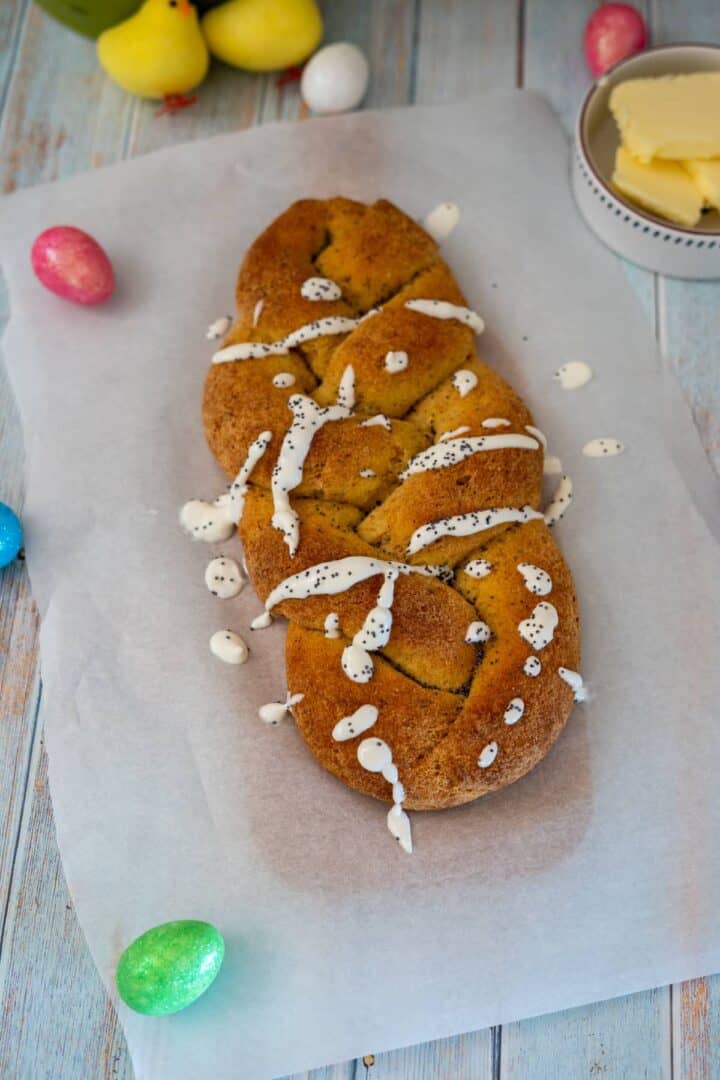
During the Lenten season, it is tradition for Greek Orthodox Christians to abstain from eating dairy products until Easter Sunday. This recipe is a delicious treat for Easter Sunday that is as tasty as it is easy to make. Preparing keto easter bread is simple, and it is sure to please.
Jump to:
The Ingredients
Coconut flour is used to make this sweet bread as it's one of my favourite low carb flours to bake with. This bread does not have a coconut taste either. The Chief Taster commented that the bread reminded him of a Danish pasty in taste.
This bread was a delicious surprise and may find itself on a regular rotation as it's easy and something that could be played around with too. I am yet to make a loaf of this but think it might be slightly brioche in taste.
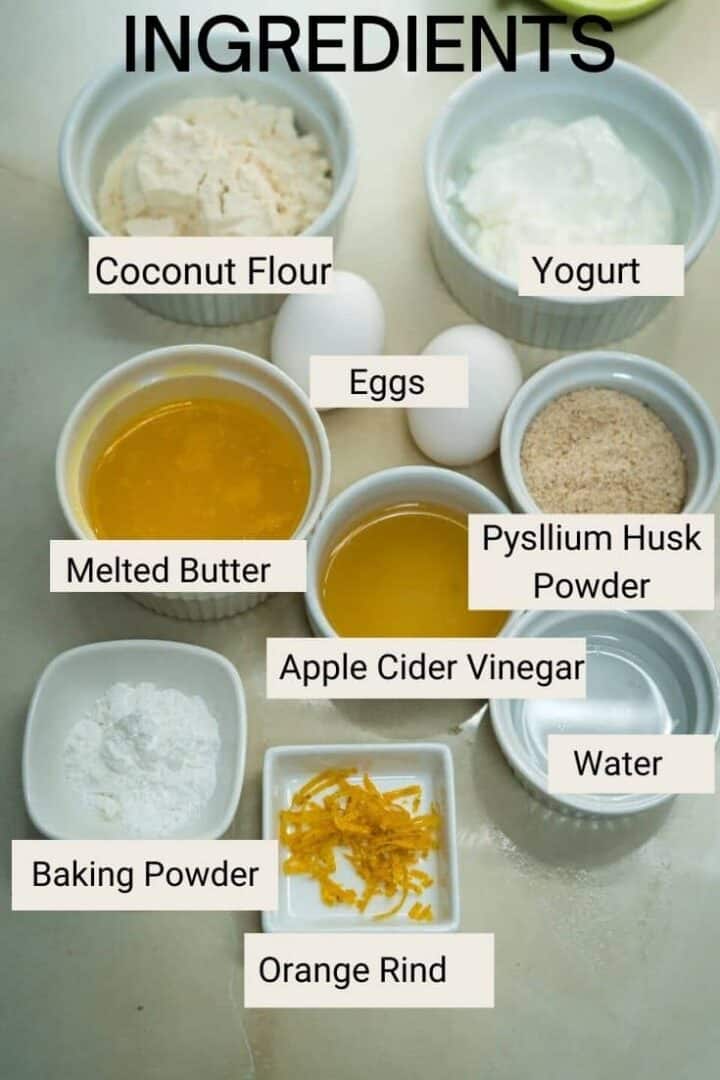
Although this is a slightly sweet tasting bread we did not add any low carb sweetener. The sweetness comes naturally from the Greek yoghurt and melted butter. Feel free to add a couple of tablespoons of low carb sweetener for your own taste though.
We used orange rind for a slight citrus taste but this could be swapped with lemon zest too.
The psyllium husk powder is essential for giving the bread a dough like texture. We often run our psyllium husk powder through a coffee grinder to make it extra fine. It helps to remove any gritty taste that some brands have. At a push, you could replace it with a flaxseed egg but the density of the bread will be heavier.
Although we have omitted salt, you could add a small pinch of this for balance.
You could add dried berries to this recipe too. Try dried cranberries or blueberries to mimic raisins.
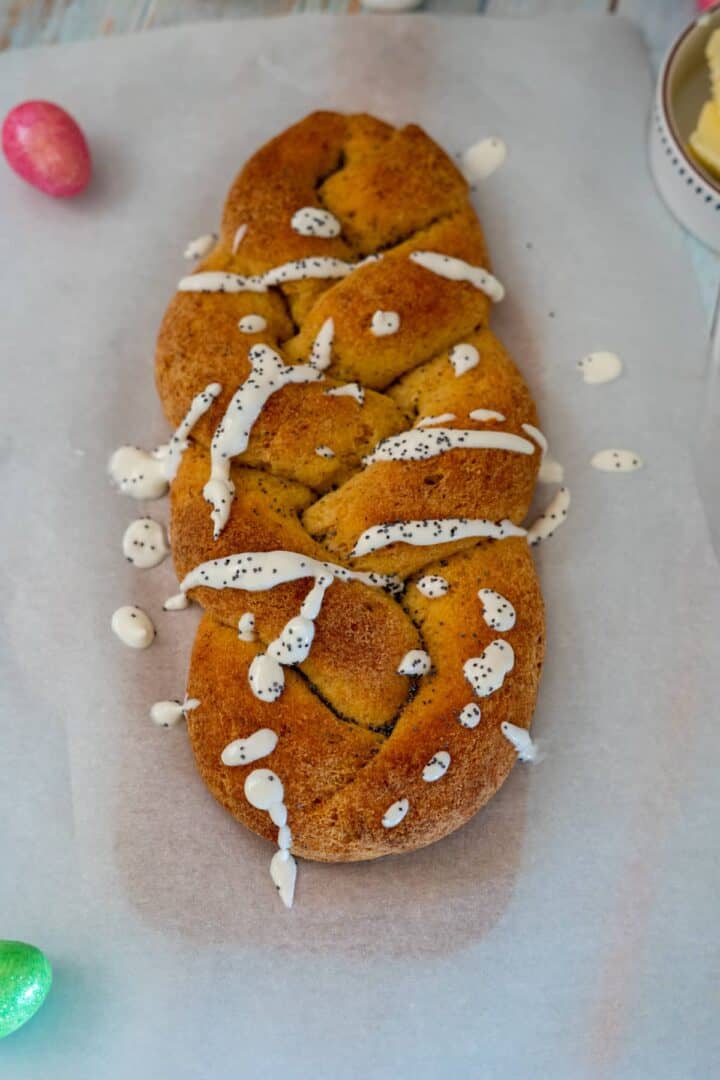
How to make keto Easter bread
This is an easy keto bread recipe to make. Once you have made the dough, let it stand for 10 minutes so the psyllium husk fiber powder can work it's magic.
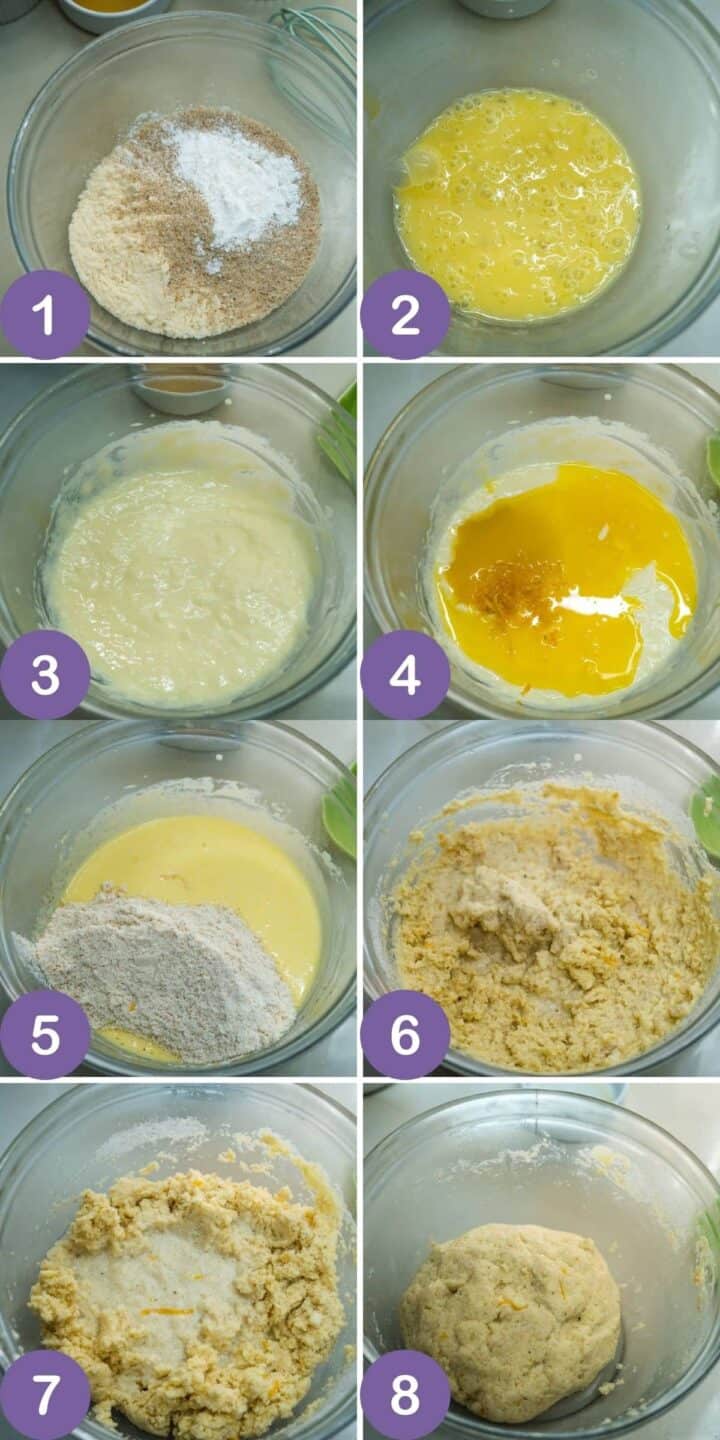
- Whisk the dry ingredients together.
- In another bowl, beat the eggs.
- Add the Greek yogurt and beat until smooth.
- Stir in the melted butter.
- Add the coconut flour, psyllium husk powder and baking powder.
- Mix and add the apple cider vinegar.
- Add the orange rind and pour the hot water over the mixture.
- Mix into a dough.
Plaiting the Bread
I'm no expert with plaiting bread but it's fun to play with. For this recipe we made a bread with 3 braids but you could roll out more. Another option is to make smaller bread rolls with this dough mixture that are braided too.
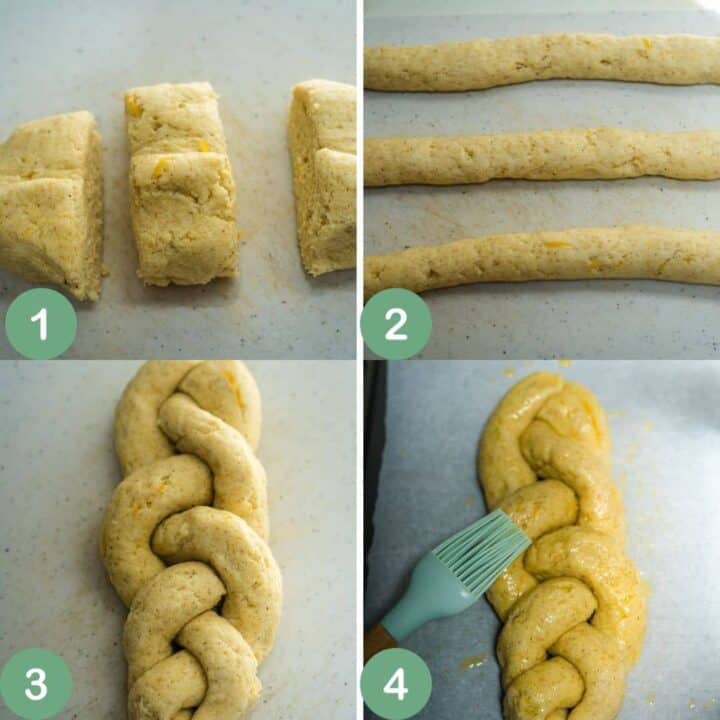
- Cut the dough into 3 equal amounts.
- Roll out each piece to even shape logs.
- Place the dough logs together on a flat surface and start to plait the logs.
- Brush with an egg wash or melted butter and bake.
Storage
Keep this Easter bread in the refrigerator in a sealed container. It should last up to 4 to 5 days. We found it kept it's moisture and didn't dry out.
Serving Suggestions
This braided bread is delicious sliced and slathered with a good quality butter but try it with a sugar free lemon curd or chia jam too! Sugar free Nutella and cream cheese goes well with it too.
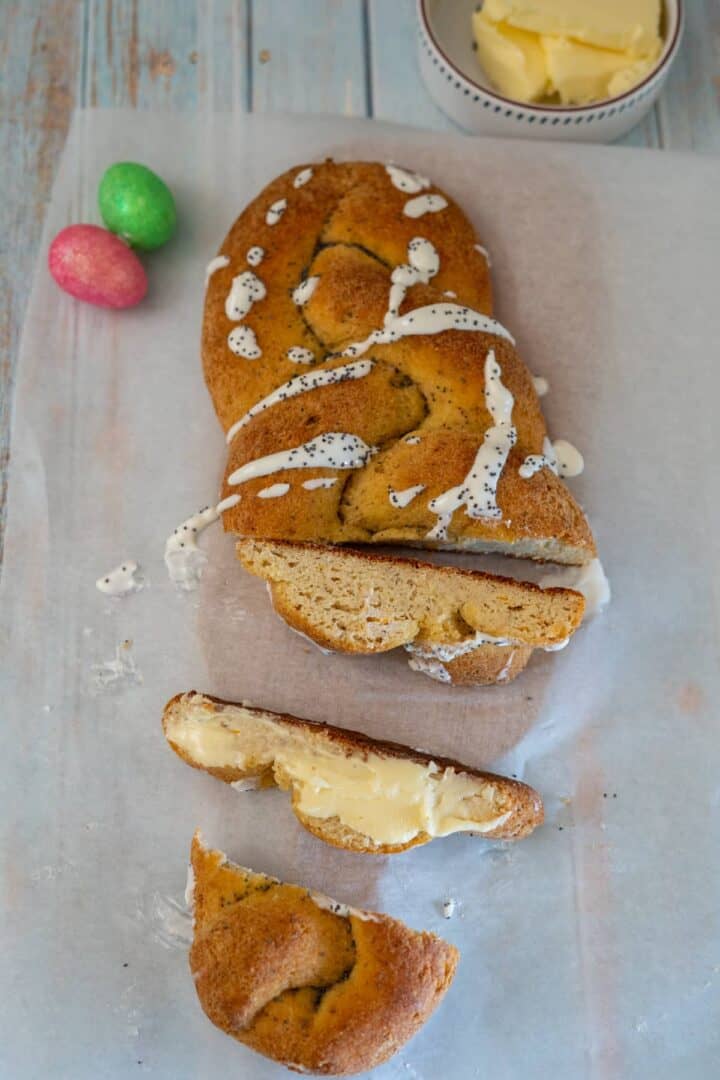
I drizzled mine with a mixture of Greek yogurt and allulose mixed into a paste. Chia seeds were sprinkled over it for a bit of crunch. Sliced almonds would be a great addition too.
Frequently Asked Questions
Yes, this bread can be frozen. Ensure that it is covered well and it will last up to 3 months in the freezer. Defrost in the refrigerator.
Although we have not tried this swap, it should still work. The quantity of the almond flour should be increased to about 1 ½ cups.
More keto Easter recipes
Chocolate Marzipan Easter Eggs
This post may contain affiliate links. Please read my disclosure policy for more information.
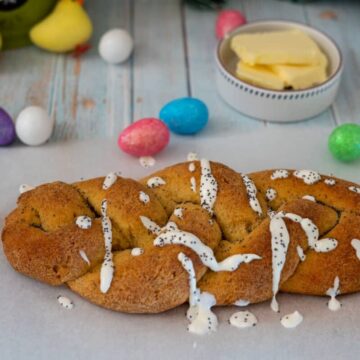
Keto Easter Bread
Need Metric Measurements?
Use the button options below to toggle between US cups and Metric grams!
Ingredients
- ½ cup coconut flour
- 4 tablespoons psyllium husk powder
- 2 teaspoons baking powder
- 2 large eggs
- ½ cup Greek yogurt
- 4 tablespoons butter melted
- 1 tablespoon orange rind
- 2 teaspoons apple cider vinegar
- ½ cup boiling water
Egg Wash
- 1 medium egg, beaten can be optional and replaced with melted butter
Instructions
- Preheat the oven to 200C/400F degrees. Line a baking tray with parchment paper.
- In a medium bowl, add the coconut flour, psyllium husk powder and baking powder. Whisk lightly to combine.
- In another medium bowl, whisk the eggs.
- Add the Greek yogurt and whisk until combined and smooth.
- Add the melted butter and whisk in.
- Add the mixed dry ingredients to the bowl and stir well.
- Sprinkle the apple cider vinegar over the mixture and work it through. (This acts as an leavening agent with the baking powder).
- Add the orange rinds and work into the mixture.
- Gently pour the boiling water over the dough. Mix well and form into a dough mixture.
- Let the dough sit for 10 minutes for the psyllium husk powder to expand.
- Cut the dough into 3 even pieces.
- Roll out each piece into even log shapes.
- Place all 3 logs together on a flat surface and pinch the ends all together.
- Braid them into an even braid and seal the bottom ends together.
- Place the bread on the parchment paper lined baking sheet.
- Brush with the beaten egg (or even melted butter) and bake for 10 minutes at 200C/400F degrees. Reduce the oven temperature to 180C/350F degrees and bake for 25 minutes until golden and firm.
- Remove from the oven and either serve warm or allow to cool before slicing.
Notes
Nutrition
The information shown is an estimate provided by an online nutrition calculator.



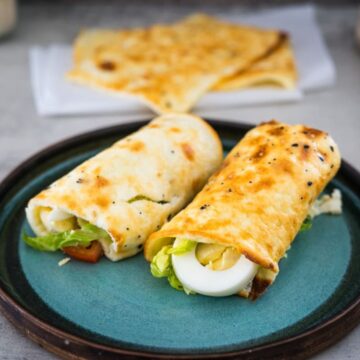
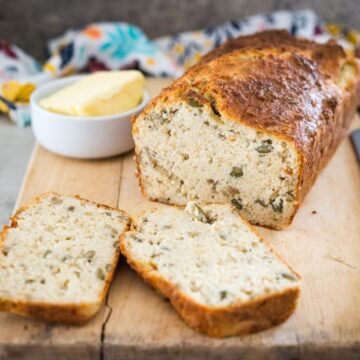
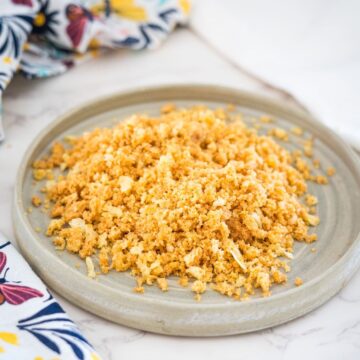
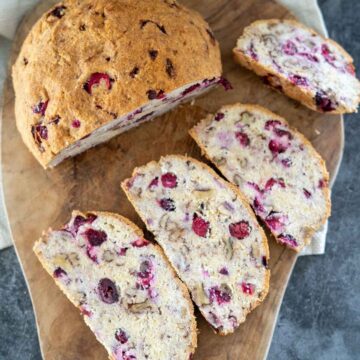
Shelley
Wow, another delicious recipe! Instead, I made bagels from this recipe and they turned out wonderful! Thanks!
Angela Coleby
What a great idea! Will try them as bagels too!